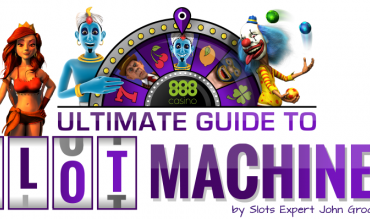HOW TO WIN AT SLOTS
Slot machines are games with odds based in math, just like all other casino games. But few players understand just how those odds work, and whether they can do anything to improve their odds.
The objective of this chapter is to introduce you to how slot machine odds work and what that means to your chance to win at slots.
Click her for our story about how to win at slots.
HERE ARE A FEW BASICS:
- Slots machine results are as random as humans can program a computer to be.
- Odds of the game are set so the house will have an edge
- Except in rare cases, slot machines are not games of strategy
HOW THE HOUSE GETS ITS EDGE IN SLOTS MACHINES
Casino games make money for the house by paying less than the true odds of winning the bet. On table games, that can be relatively simple. At double zero roulette, for example with numbers 1 through 36 plus 0 and 00, the true Roulette odds against any specific number are 37-1, but the house pays single-number winners only 35-1.
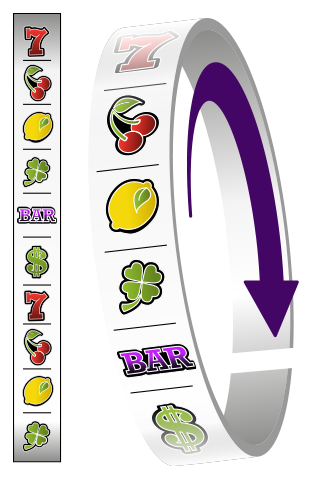
HOW MANY POSSIBLE OUTCOMES?
Slot machine odds work in a similar fashion to the roulette example, except there are many more possibilities on the slots. There are thousands, and sometimes millions, of reel combinations. There also is an open field for game designers to assign how much each winning combination pays. The number of winning combinations and the payoffs per winner work together to determine a game’s odds.
The sheer number of possibilities makes the math that goes into slot machine odds more complicated than on table games.
- On early three-reel slots with 10 symbols per reel, there were 1,000 possible combinations (10 x 10 x 10).
- If blank spaces between lines are used as stops, the number of combinations increases to 20x20x20, or 8,000.
- With bigger reels holding 20 symbols and 20 spaces, combinations increase to 40x40x40, or 64,000.
The change to virtual reels enabled programmers to make the reels to behave as if they had any number of stops. With 100 stops on each of three reels, there are 1 million combinations. The Megabucks three-reel slot that paid the world record jackpot of more than $39 million has about 50 million combinations. Most modern video slots have five video reels can be as long as the gamemaker needs them to be. With 100 symbols on each of five reels, there are 10 billion combinations.
A SIMPLIFIED SLOT
To see how slots pay less than true odds to give the house an edge, let’s set up an example that’s as streamlined as slot odds can get, a game of the type used in the early decades after Charles Fey invented the three-reel slot machine in 1895. A hypothetical three-reel slot game with one 7, two bars, three cherries and four watermelons per reel would have 1,000 possible combinations and return 83.2 percent to players with this pay table.
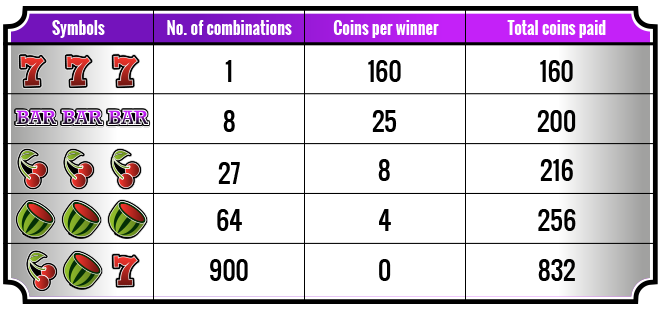
IN OUR SAMPLE GAME:
- Each of three reels has 10 symbols. Each reel has one 7 – that’s the top jackpot symbol.
- Each reel also has two bars, three cherries and four watermelons.
- There are 1,000 possible three-reel combinations – 10 symbols times 10 symbols times 10 symbols.
- Only one combination – or 1 x 1 x 1 – will be three 7s.
- Eight combinations will be three bars, 27 will be three cherries and 64 will be three watermelons.
- 900 of the 1,000 combinations mix different symbols.
If the game paid at true odds, then the payoffs would be set up so that each 1,000 coins wagered would bring 1,000 coins in payoffs. One way to do that would be to have payoffs of 170 coins on three 7s, 30 on three bars, 10 on three cherries and 5 on three watermelons. But the casino must have an edge, or it couldn’t pay the bills and offer the game. So instead it pays 160 on three 7s, 25 on three bars, 8 on three cherries and 4 on three watermelons. Multiplied by the frequency of wins, those payoffs total 832 coins. By paying less than the true odds of the game, the machine has a payback percentage of 83.2 percent, or a little less than today’s 1- cent games.
SLOTS TODAY
Modern slot machine or online slots odds work in much the same way, except that the math is more complex for several reasons:
- Random number generators work from much larger number sets, leading to exponentially greater possibilities.
- Many more than four reel symbols are actually used.
- Most modern slots have more paylines than the one line in the sample slot above.
- Game programmers have to account for the effect of bonus events.
SLOTS EXAMPLES AND EXPLANATIONS
In the classic WMS Gaming video slot Super Jackpot Party, there are eight reel symbols that form winning combinations, plus the noisemaker and party guy symbols that launch a bonus event. All of the symbols need to be assigned sets of random numbers, and payoff values assigned to three-, four- and five of a kind winners. That makes calculations much more complex than in our example game above.
The number of paylines also complicates the math. Even if there’s only one jackpot symbol on each reel, a 30-line game means there are 30 chances to line up those symbols in a winning combination, instead of just one. So it goes for every possible combination – programmers have to account for each combination 30 times.
As for bonus events, nearly all modern slot machines have events in which regular play stops, and with no further wagers, you get a spin of a bonus wheel, a pick’em event, free spins or some other extra. Bonus event payoffs have to be included in the calculation of the game’s overall return.
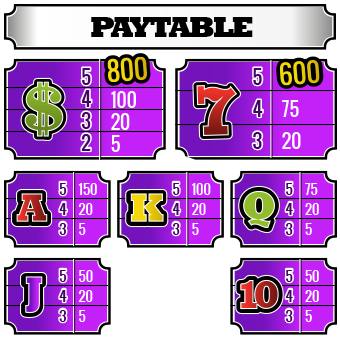
OUTSIDE LOOKING IN
We can’t see the random numbers being generated, and it’s those numbers that really determine whether we win. In fact, there’s a list of things we can and can’t see that are important to our chance of winning.
- We can’t see the odds of the game.
- We can’t tell if one machine is higher paying than another.
- We can see a machine’s pay table, and that gives us a clue to volatility.
- We can see what kinds of bonuses are offered, and that also is a volatility clue.
Casinos don’t post payback percentages on individual games, and there’s no way for a player to calculate the odds since all the random number details are regarded as proprietary and not revealed. Even on different machines with the same game, we don’t know if the paybacks are the same. Game manufacturers make several versions of the same game available to casino operators, and each version has its own payback percentage. Two machines can look identical, but have different payback percentages.
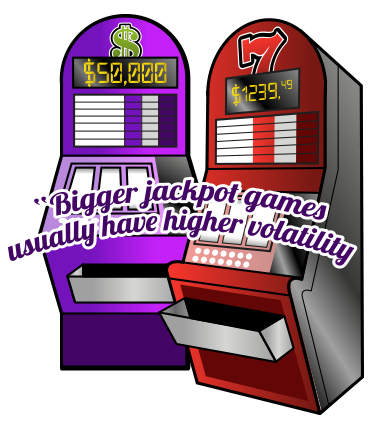
However, a machine with a large top jackpot gives back less on smaller wins than a game with a smaller top prize, and that means the big jackpot games usually are more volatile. That’s not always the case – the big jackpot can be rare enough that the game still has a normal percentage of lower payoffs, but it’s a starting point.
In addition, games with free spin bonuses are more volatile than games with pick’em bonuses. Volatility matters in choosing what you want out of a game. Are you the type of player who wants to maximize chances at a really big win and are willing to accept that fast, bankroll-eating losses are part o f the game? Then you want a high-volatility game.
Would you rather have a game that gives frequent small wins and extends your playing time, but rarely pays big? Then you want a low-volatility game. But regardless of whether the game you choose has high volatility, low volatility or something in between, you can be sure the house has taken an edge with payouts that are less than the true odds of winning your bet.
KEY TAKEAWAYS
- Casinos have an edge on slot machines because winners are paid less than true odds.
- Slot odds are mathematically complex because of the number of possible outcomes and the different paybacks per winner.
- You can’t look at a slot game and tell the odds. In fact, two identical-looking games can have different odds.
- Looking at a machine can give you a clue as it its volatility, and that can help in choosing a game.
HOW SLOTS CAN BE BOTH PROGRAMMED AND RANDOM
When a casino buys a slot machine from a manufacturer, it can choose from a variety of targeted payback percentages. The manufacturer might make the same game available in 87-, 89-, 91- and 93-percent versions, and it’s up to the operator to choose which works best in game mix and for its competitive position.
That the games have targeted payback percentages in their programming leads to misconceptions from players. A common theme in my email over the last 20 years has been, “How can games be both programmed and random? The programming must keep them on track for the percentage.”
The short answer is that slots are programmed for a target percentage in the same way table games are: Odds of the game are set so they will naturally lead to an expected payback percentage.
A TABLE ANALOGY
Let’s use roulette as an example, because the math is uncomplicated.
- A double-zero roulette wheel has 38 numbers – 0, 00 and 1 through 36.
- The odds against any specific number coming up on any spin are 37-1.
- The casino pays only 35-1 on any winning single number.
- The two-unit difference between 37-1 odds and 35-1 payoffs is kept by the house.
- Divide that two-unit difference by 38 possibilities and you get 0.0526, for a 5.26- percent house edge.
In that way, roulette is “programmed” so that in the course of thousands of wagers, the house will keep 5.26 percent. Results can be random. The same number can turn up three or four or five times in a row. But over time, the odds of the game lead to that percent-edge.
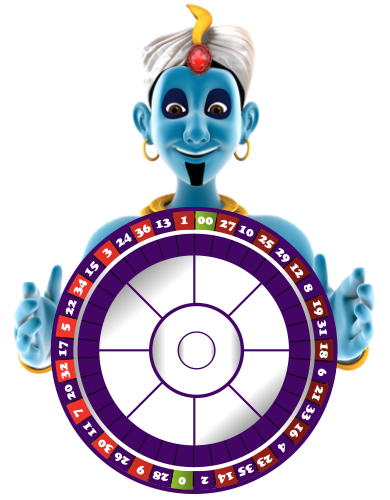
SLOT “WHEELS”
What if instead of reels with symbols and results driven by a random number generator, we set up a slot-like game with slot-like payoffs by using a series of roulette-like wheels?
- Let’s say we line up three roulette-type wheels, each marked into 100 segments.
- We mark each segment with a slot symbol. Each wheel gets one 7, five bars, 10 cherries and so on.
- We have a dealer spin and drop a ball on each wheel.
- The total number of three-wheel combinations is 100x100x100, or 1 million.

That’s the same number of possible combinations you’d get on a slot machine if the random number generator was working with sets 100 numbers for each reel.
From there, it’s easy to calculate the number of possible combinations that have the ball landing in the same symbol on each wheel. For the 7, since there is only one on each wheel, it’s 1x1x1 – there is only one three-7s combination. For bars, it’s 5x5x5, or 125 out of the million total combinations. For cherries, it’s 10x10x10, or 1,000 three-cherry combos.
Note that we’re not using computer software here. We’re using physical equipment, but it’s giving us the equivalent of “programmed” combinations and odds. That’s just how the odds work on modernized computerized slot machines. They don’t force a game to pay an exact percentage, they just let the normal odds of the game drive long-term results to an expected percentage, the same way table games do.
PROGRAMMED VS. RANDOM, FAQ
The notion that slots are both programmed and random can be difficult to fathom. Confusion over slot programming has jammed my email box for years. Here are some of the questions readers ask most often.
A. “Random results” is not the same as saying “equal results.” A game doesn’t have to be programmed so that a jackpot symbol shows up as often as a blank space, or a bonus symbol as often as a cherry.
The odds of the game are set so that blank spaces will show up more often than winning symbols and small winners will show up more often than big winners. On three-reel slots, that will lead to there being more losing spins than winners, and on five-reel video games it will lead to more “wins” for amounts less than the size of your bet than bigger winners. The programmer sets the odds of the game, and then lets random chance take its course.
A. Streaks are a normal part of the probability of the game. Let’s take a three-reel game with a 12% hit frequency -- you’ll have a winner an average of once per 8.333 spins. On your first spin, there’s an 88% chance it’ll be a loser. There’s a 77% chance you’ll lose two in a row, 68% chance you’ll lose three in a row, and so on.
At 20 in a row, there’s still a 7.8% chance of every spin being a loser. That’s easily within normal probability. Anyone playing a machine with a 12% hit frequency for very long will have streaks of 20 or more losses.
A. Your choices do make a difference in pick’em-style bonus events, but not in any way you can predict or control. The programmer knows that over a very long time, the bonus even will yield an average payback.
Let's make up a simple slots bonus event, in which you pick one of three symbols to reveal a bonus award. If you touch one symbol, you get 25 credits, if you touch a different one, you get 50, and if you touch the other you get 75. You don’t know which symbol hides each award, so your results are random. However, over a very long time, you’ll get each award about a third of the time, so will average 50 credits.
The programmer can build that average into calculations for the payback percentage. You have a random result contributing to odds that drive paybacks into a long- term average – the same as on the reel-spinning part of the slot game, and the same way table games work.
KEY TAKEAWAYS
- Slot machines have targeted payback percentages built into their programming, but results are random.
- Programmed percentages on the slots work in the same way as percentages on the tables – the odds of the game lead to expected returns.
- Random results are not the same as equal results. Odds are set so big winners turn up less often than other combinations.

BEATABLE SLOT MACHINES
With some rare exceptions, Las Vegas-style slot machines with random number generators are not designed to be tests of skill. There is no strategy that can overcome the house edge.
Games are not beatable in the long run. There could be a change coming as both brick-and-mortar casinos and online operators try to reach out to the Millennial generation. The State of Nevada legalized fully skill-based electronic games in 2015, and it’s expected some games will make their way onto casino floors in 2016. In some international markets, skill already is part of the mix. Japanese pachinko parlors offer games known as pachisuro, a blend of slot game play and traditional pachinko, and skillful play may improve your results. Still, Las Vegas is the trend-setter in slot development, and its random number generator slots are designed to so the house can count on its edge. Even so, a few beatable games have made it to casino floors.
BANKED BONUSES
In the mid-to-late 1990s there were a flurry of games where you could collect coins or symbols on a video screen until you reached a trigger point for a bonus award. Players in the know could look for machines that were already part way toward slots free bonus territory, and play only when enough of the trigger was completed to give the player an edge. Such games are rare today.
In a casino with older equipment, you still might spot such games occasionally.
Here’s how they worked:
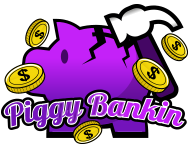
Piggy Bankin:
This WMS Gaming three-reel slot was the banked bonus trend-setter. Piggy Bankin’ had a Dotmation screen in the top box, above the mechanical reels. Every time the reels showed three blank spaces, a coin was added to a piggy bank animated in orange dots. When the Break the Bank symbol landed on the payline, an animated hammer broke the bank, and the player collected the amount displayed. It was soon discovered that if you played only with enough coins in then bank, you had an edge.
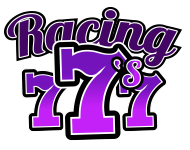
Racing 7s:
Before taking a full plunge into video, IGT had its “Vision Series” with a color LCD panel in the top box. Racing 7s featured red, white and blue 7s on a track. Each time a corresponding 7 would land on the payline in the main game, that color 7 would move a notch closer the finish line. To get an edge, you looked for a screen with 7s already close to the finish and a bonus payout.

Fort Knox and Buccaneer Gold:
Silicon Gaming, no longer in business, offered several games with banked bonuses.
On Fort Knox, if five numbers in a 10-digit code had already been solved through reel spins, you had an edge. Once the full code was solved, the vault would open for your bonus. In Buccaneer Gold, the object was to collect five daggers sticking in the ship’s rail. If there already were three or four daggers when you started, you had an edge.
S&H Green Stamps:
This was Bally Technologies’ entry into the banked bonus field. During play, you’d collect Green Stamps as they landed on the video reels. If you filled a book of 1,200 stamps, you’d go to a slots bonus event. The trick was to look for machines with 600 stamps or more already in the book. At that level, the player had an edge. In casinos with all new equipment, you won’t find these games. In casinos with older equipment, it’s possible. More important than the specific games is that you understand that if you ever see such a build-a-bonus, banked game, starting close to the finish improves your odds.
JACKPOT HUNTING
A number of players over the years have told me they beat the slots by looking for larger than usual progressive jackpots. It’s a method that works better on video poker where the house edge on the base game is smaller than on the slots. Slot payback percentages are low enough that even what looks like an oversized jackpot may not be enough to overcome the full house edge. Still, if you always wait to play a game until its jackpot is a certain size, you will be playing a game with a lower house edge than if you played for lesser amounts.
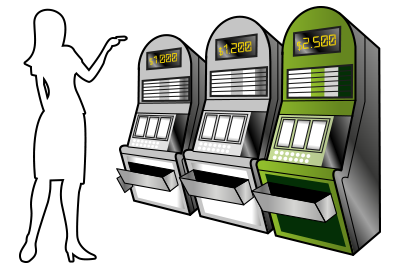
Here’s the method a jackpot-hunting player relayed to me:
- She starts by making daily rounds and charting jackpot amounts on different machines.
- Of the machines she tracks, she notes the payoff amount when someone wins the jackpot.
- Over many readings, she gets an idea of the average size of the jackpot when it hits.
- She then plays only when the jackpot reaches that average. For example, if the jackpot starts building from a $1,000 base and her chart of dozens of jackpots or more shows it hits at an average of about $2,500, then she starts playing the game only when the jackpot is $2,500 or more.
JACKPOT HUNTERS, BEWARE
If you’re going to play such games anyway, there’s no harm and some gain in delaying your play until the jackpot exceeds a targeted amount. However, profits are not guaranteed.
- Knowing the average size of the jackpot does not tell you the break-even point.
- There is no guarantee that you’ll be the one to hit the jackpot.
- Waiting for the jackpot to be a certain size does not increase your chances of winning the jackpot.
Let’s expand on that a little. Imagine a game where the jackpot usually hits at about $2.500. Unbeknown to you, the jackpot has to reach $5,000 before the game’s return reaches 100 percent. That means even if you start playing only when the jackpot is $2,500 or more, you still are playing a game on which the house has an edge. Waiting does ensure that when you do hit the jackpot, your average payout will be higher than if you started playing at the base level.
So if you’re jackpot hunting, good luck, but be aware there are pitfalls as well as big rewards.
SKILL-BASED BONUS EVENTS
Chapter 5, BONUS EVENTS, will deal more extensively with skill-based events. For now, understand that even though fully skill-based gaming has not yet launched in Nevada, there are games with skill-based bonuses. Among those marketed in recent years are IGT’s Centipede, where you play a version of the old arcade game in your bonus event, and GTECH’s Zuma, based on the popular online game.
Though your skill makes a difference in these games, they are not beatable slots. Even if you’re a Centipede grand master, the house still has an edge. With some variation by jurisdiction, a maximum of 4 percent of a game’s overall payout can be based on skill, and the house edge is high enough that getting the full 4 percent will not take you into profitable territory.
KEY TAKEAWAYS
- As games that are not strategy-driven, most slot machines are not beatable in the long run.
- Banked bonus games offer an opportunity to get an edge, if you see that you’re already part way toward triggering a bonus.
- There might be profit opportunity in games with progressive jackpots, but there’s no certainty.
- Your skill matters in skill-based bonuses, but expertise doesn’t give you an edge on the games.
HOW TO WIN AT SLOTS - FAQ
Question 1: Does the house gets an edge on slots by blocking winning combinations?
No. The house gets an edge by paying less than the true odds of winning on slots.
Question 2: On a mechanical slot with three reels and 10 symbols on each reel, how many possible three-reel combinations are there?
1,000 possible combinations.
Question 3: How many reel combinations are possible on modern slots with video reels or virtual reels?
Slots can be programmed with any number of slots on a virtual reel or video reel, so there can be as many reel combinations as the game designer needs.
Question 4: Do identical-looking machines always have the same payback percentages?
No, identical-looking machines don’t always have the same payback percentage. You can’t tell a game’s odds by looking from the outside.
Question 5: Do the slot payback percentages are “programmed” only in that the odds of the game are set to lead to a desired payback percentage?
Yes. Slot payback percentages are “programmed” only in that the odds of the game are set to lead to a desired payback percentage.
Question 6: Does randomness mean all symbols must turn up on an equal portion of spins?
No. Results can be random while still setting the odds so some symbols occur more often than others.
Question 7: Do long winning or losing streaks defy the odds of the games?
No. Long winning or losing streaks are part of normal probability.
Question 8: On most slots, is there an opportunity to overcome the house edge and be consistently profitable?
No. Most slots do not offer an opportunity to overcome the house edge and be consistently profitable.
Question 9: What is a “banked bonus”?
A banked bonus is an event in which you collect representations of coins or symbols until you have enough to trigger a bonus event.
Question 10: Does waiting until a progressive jackpot reaches a certain size increase your chances of winning the jackpot?
No, until a progressive jackpot reaches a certain size does not increase your chances of winning the jackpot, but it increases your average payout when you win the jackpot.
